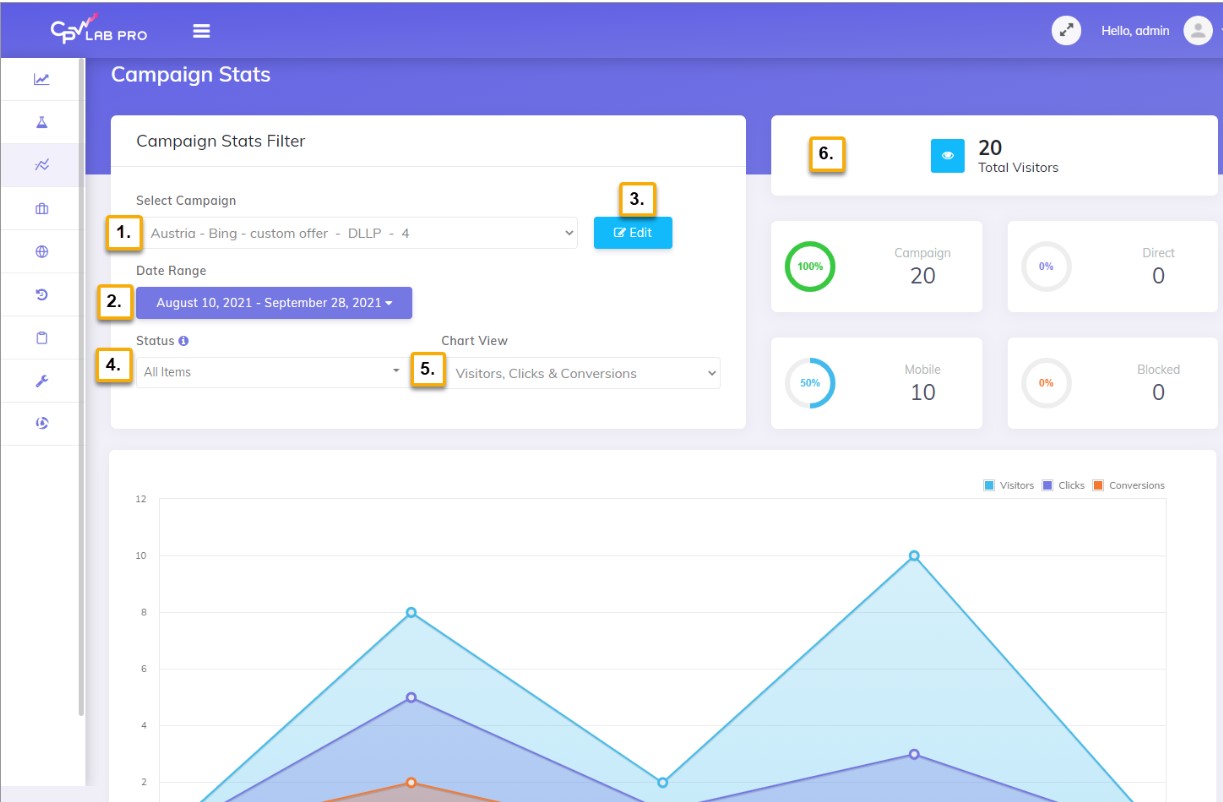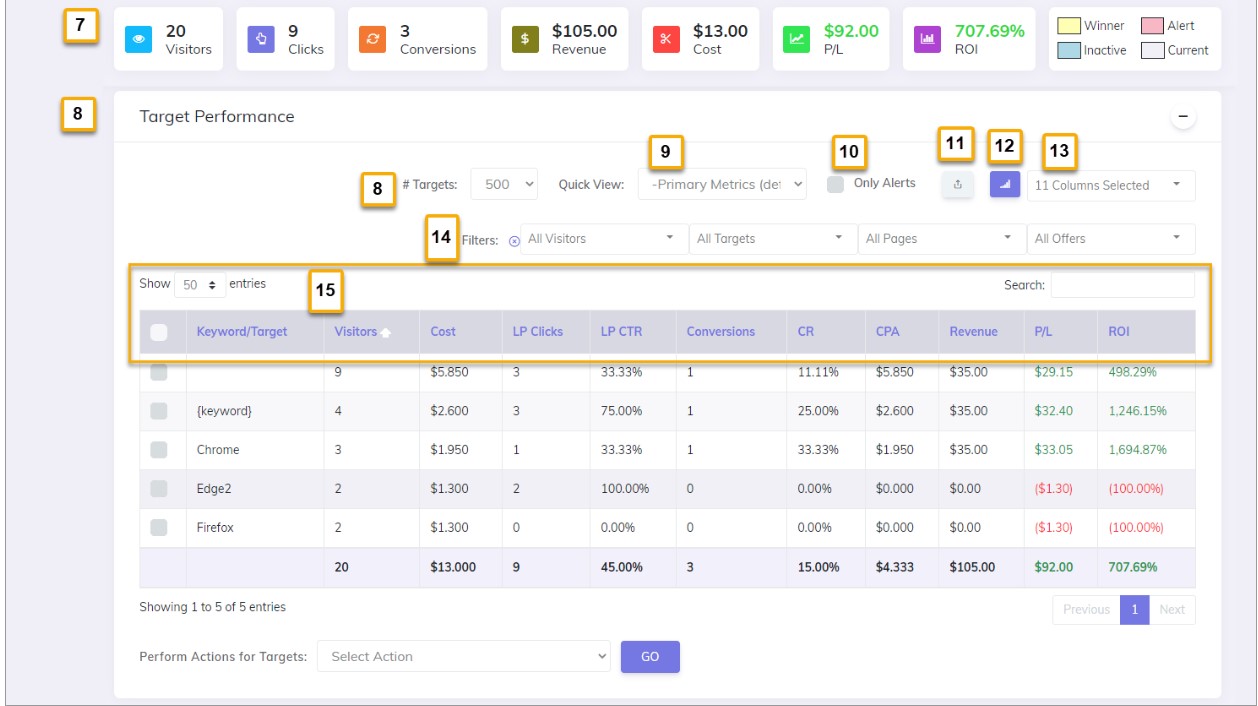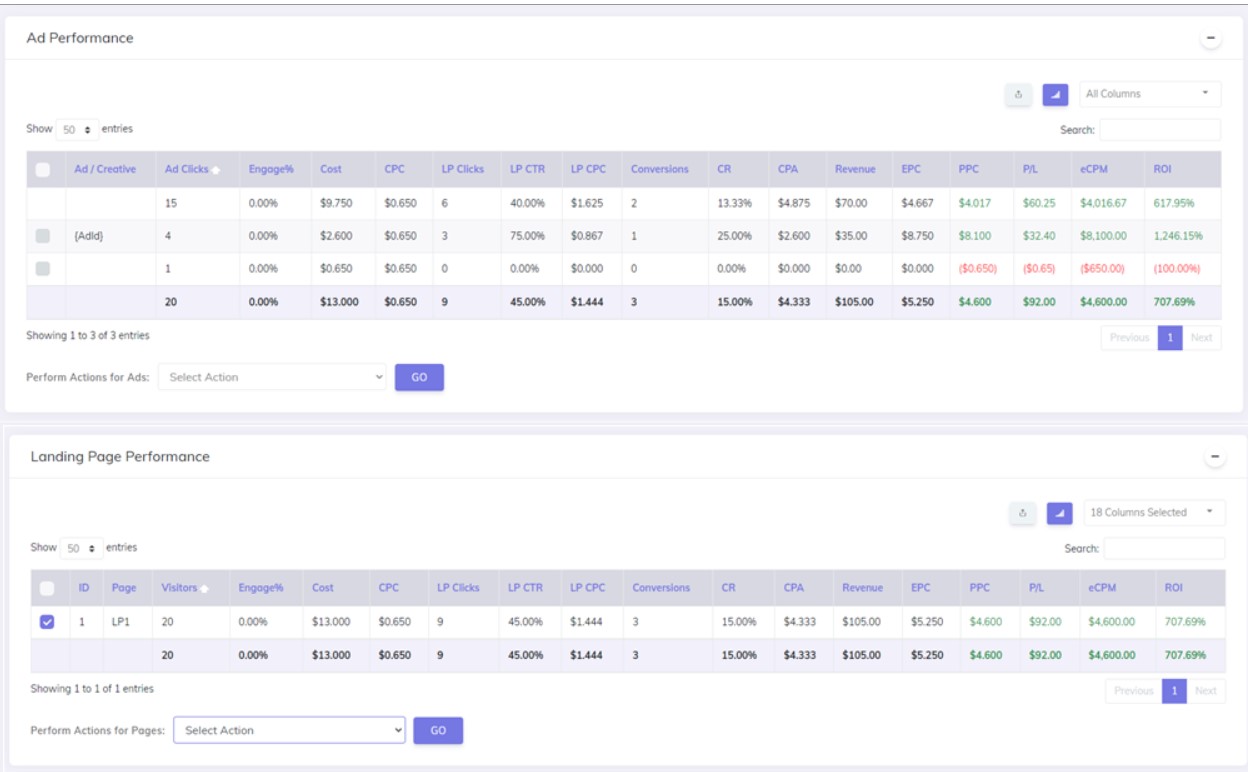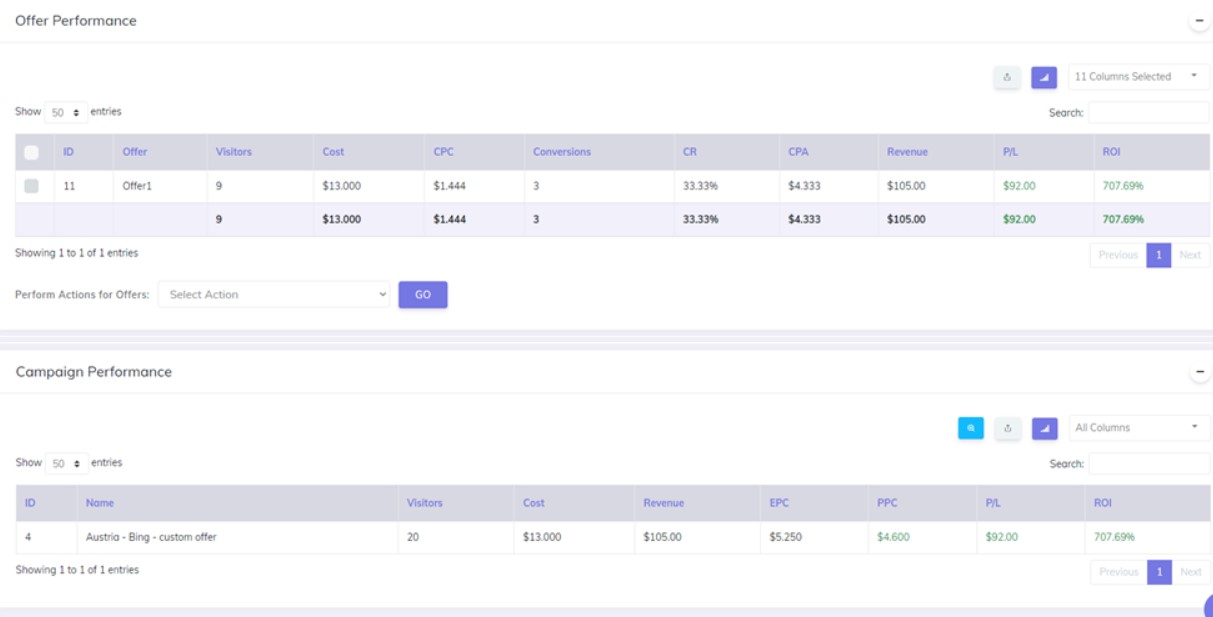Today, I want to guide you through the process of optimizing your digital campaigns. Whether you’re new to the digital marketing world or looking to refine your strategies, I believe that with the right insights and tools, anyone can significantly enhance their website’s performance and drive substantial growth.
Together, we’ll explore how to meticulously track your campaigns, pinpoint the KPIs that truly matter, and dissect your conversion funnel to identify opportunities for optimization. My goal is to show you how to leverage data to make informed, strategic decisions that will unlock the full potential of your digital presence.
So, if you’re ready to take your digital marketing efforts to the next level and achieve success like never before, let’s embark on this journey together. With a little guidance and the right strategies, there’s no limit to what we can accomplish.
I’m excited to share my insights and help you chart a course toward unparalleled digital success.
In the digital world, the journey of your website’s visitors says a lot about your business’s success. It’s like being a detective; you need the right tools to uncover the clues and tell the story. You need quantitative data analysis to find and promote what people love and need.
Quantitative data analysis
In digital marketing, mastering the art of quantitative data analysis is like possessing a compass in the vast ocean of online interactions. It empowers you to precisely navigate the complexities of web traffic and user behavior, transforming raw data into actionable insights.
By leveraging the power of web analytics tools, you can understand how visitors interact with your site, which can inform strategies to enhance the user experience and conversion rates. This process begins with a solid foundation in web analytics, progresses through the meticulous tracking of key performance indicators (KPIs), and culminates in the detailed examination of your conversion funnel through a quantitative data analysis funnel.
Each step is designed to provide a comprehensive view of your website’s performance, identifying both strengths to build upon and weaknesses to address.
- Web Analytics: Tools like CPV One and Google Analytics should be your starting point. You can track overall traffic, user behavior, conversion pathways, and more here. Look for high bounce rates, drop-offs in the conversion funnel, and low-engagement pages.
- Key Performance Indicators (KPIs): Define clear KPIs such as the conversion rate, average order value, cart abandonment rate, and time on site. Track these religiously.
- Funnel Analysis: Break down a user’s journey on your website into discrete steps. Analyze each step for potential leakage points where visitors may drop off.
These three tools give you the insights you need to make smart decisions and create a website that attracts visitors and turns them into customers.
So, let’s begin investigating your website’s and campaign’s data and help you charge full speed ahead toward growth and success.
I. Web Analysis: Unveil Your Site’s Visitor Dynamics
Web Analysis, an integral component of digital marketing, involves collecting, reporting, and assessing data from the web to understand and optimize web usage.
Discover the secrets of visitor interaction on your website with cutting-edge tools like Google Analytics, CPV One, and CPV Lab. With precise tracking and analysis, every click and scroll tells a story, guiding you toward unparalleled improvements and deeper insights into user behavior.
Google Analytics Overview:
Website owners can track and examine data about the traffic to their websites using Google Analytics, a free tool from Google. It’s a tool that gives insight into how users find, interact with, and leave your website.
Here is the tutorial to start using it:
As you can see with Google Analytics, we can:
Track Overall Traffic:
Google Analytics provides a real-time overview and historical data about who visits your website, where they come from, and how many there are.
For example, it can show you data points such as:
Number of visitors (unique and returning)
Geographical location of visitors
Traffic sources (organic search, paid search, social media, direct visits, etc.)
Track User Behavior:
Understanding how users behave on your site can guide you toward effective optimization.
For example:
Which pages do users visit?
How long do they stay on these pages?
Which actions do they take (clicks, form submissions, downloads)?
Say you have an e-commerce website. You notice that users spend a lot of time on product description pages but don’t add products to their cart. This might indicate that the product information is not convincing or clear enough.
Track Conversion Pathways:
Conversion pathways are the steps a user follows to complete a goal on your site, such as purchasing.
Google Analytics can:
Track these steps to see the user’s journey toward conversion.
Show where users typically leave the process called ‘funnel abandonment.’
For instance,
if many users drop off at the shipping information page, you might infer that shipping costs or options are a barrier.
Track High Bounce Rates:
The bounce rate indicates the percentage of visitors who leave the site after viewing only one page.
It’s like someone coming into a store, taking a single glance, and walking out. Factors causing high bounce rates can include:
Slow page load times
Unappealing design
Lack of clear call-to-action (CTA)
Track Drop-offs in the Conversion Funnel:
Evaluating where users are exiting before conversion helps identify problematic areas.
Example: If the checkout process has multiple steps and users are leaving midway, you might conclude that the process is too complex or time-consuming.
Track Low-Engagement Pages:
Engagement can be measured through metrics such as page views, time on page, and events (like video plays or downloads).
If you are an affiliate, you can also track your affiliate links with Google Analytics 4.
CPV One or CPV Lab for Quantitative Data Analysis
If you want more profound results from your quantitative data analysis, you can track your website and campaigns with the self-hosted tracker CPV Lab or the cloud-hosted tracker CPV One.
You can track your websites and campaigns and get in-depth
Campaign Data
| Data Point | Details |
|---|---|
| ID | Campaign, Page or Offer ID |
| Page | Page Name |
| Page URL | URL of Page |
| Keyword/Target | Keyword or Target Passed from the Traffic Source |
| Ad/Creative | Ad Name or ID Passed from the Traffic Source or Manually entered |
| Offer | Offer Name |
| Offer URL | URL of Offer |
Clicks and Conversions
| Data Point | Details |
|---|---|
| Views /Visitors | Number of Views or Visitors |
| Clicks /LP Clicks | Total Clicks / Clicks from Landing Page |
| CTR /LP CTR | Click Through Rate |
| CPC /LP CPC | Cost Per Click / Cost Per Click from Landing Page |
| Engage% | % of Visitors who reached your set Engagement Rate |
| Conversions | Number of Conversions / Sales |
| CR | Conversion Rate |
| CPA | Cost Per Action, also referred to as Cost Per |
| CPSUB | Cost Per Subscriber |
| Subscribers | Total Opt-Ins or Leads |
| SR | Subscriber Rate % |
Revenue Data
| Data Point | Details |
|---|---|
| Cost | Total Cost or Ad Spend |
| CPV /CPC | Cost Per View / Click |
| Revenue | Total Revenue |
| P/L | Profit / Loss |
| EPV /EPC | Earnings Per View / Click |
| PPV /PPC | Profit Per View / Click |
| eCPM | Earnings Per 1000 Impressions |
| ROI | Return on Investment |
| AOV | Average Order Value = Revenue / Conversions |
Referrers
| Data Point | Details |
|---|---|
| Referrer-Domain | The referring domain of the visitor |
| Referrer-Page | The referring page of the visitor |
| Category | Referrer Category |
Time & Day
| Data Point | Details |
|---|---|
| Day | Day of the Click or Conversion |
| Hour | Time of the Click or Conversion |
Mobile Browser
| Data Point | Details |
|---|---|
| Browser | Device Browser |
| Browser Version | Device Browser Version |
| Browser Language Header | The preferred language passed by visitors’ browsers |
| Cookie Support | Does the Browser Support Cookies |
| 3rd Party Cookies | Does the Browser Support 3rd Party Cookies (such as Retargeting Cookies) |
| Embedded Video | Does the Browser Support Embedded Video Playback |
| IFrames Support | Does the Browser Support iFrames |
| Javascript Support | Does the Browser Support Javascript |
Content Support
| Data Point | Details |
|---|---|
| Click to Call | Does the Device Support Click to Call |
| Flash Support | Is Flash Supported on the Device |
| FLV Playback | Does the Device Support FLV Video Playback |
| MOV Playback | Does the Device Support MOV Video Playback |
| MP4 Playback | Does the Device Support MP4 Video Playback |
| PDF Support | Does the Device have Native PDF Support |
| Receive MMS | Can the Device Receive MMS Messages |
| Receive PUSH | Can the Device Receive PUSH Messages |
| Receive SMS | Can the Device Receive SMS Messages |
| RSS Reader | Does the Device have a Native RSS Reader |
Device Info
| Data Point | Details |
|---|---|
| Brand Device | Brand (ex. Samsung, Apple) |
| Data Rate | Device Data Rate Speed |
| Device Model | Device Model Number (ex. GT-I9100 or XT984) |
| Device Name | Name of the Device (ex. Galaxy S) |
| Device Type | The Type of Device…Computer, Phone, Tablet, SmartTV |
| ISP/Carrier | The Internet Service Provider or Mobile Carrier (ex. Tmobile, Verizon) |
| Market Name | The Commonly Used Name of the Device (ex. Galaxy S III) |
| OS Device | Operating System |
| OS Version | Device Operating System Version |
| Screen Resolution | Device Screen Resolution |
| Screen Size | Device Screen Size |
| Wifi Support | Does the Device Support Wifi |
Device Usage
| Data Point | Details |
|---|---|
| Dual Orientation | Can the Display be switched from vertical to horizontal |
| Phone # Support | Does the Device Support a Phone Number and Calls |
| Pointing Method | Type of Pointing Method the Device uses, such as Touch, Clickwheel, etc. |
| QWERTY Keyboard | Does the Device have a QWERTY Keyboard |


In your quantitative data analysis, for each campaign type, you’ll have multiple performance reports, depending on the campaign type, to filter and display data for all primary elements of your campaign: targets and keywords, ads, landing pages, and offers.
Each section has options to export to CSV, view charts, and select data options to view.


Within each performance section of the campaign statistics, multiple data points will be available, depending on the section.
Check the Data Points to View, and you can then drag and drop all columns to organize the information however you wish.
Find more details in the video below:
II. Quantitative data analysis and Key Performance Indicators (KPIs):
Campaigns can be complex and multifaceted in marketing, political, or social initiatives. Understanding key metrics at each campaign stage helps gauge its effectiveness, make necessary adjustments, and ultimately drive success in your quantitative data analysis. Here’s an overview of the most important metrics to consider at each stage of a typical campaign:
1. Planning and Pre-launch Stage
- Audience Insights: Demographics, interests, and behaviors. Understanding your target audience is crucial before launching a campaign.
- Budget Estimation: Total budget, allocation per channel. Ensures resources are appropriately distributed.
- Reach and Frequency Goals: Estimates of how many people you aim to reach and how often.
2. Launch Stage
- Impressions: The total number of times your campaign is seen. This metric helps in understanding the initial reach.
- Click-Through Rate (CTR): The percentage of impressions resulting from a click. It indicates the effectiveness of your ad copy or content.
- Engagement Rate: For social media campaigns, how much interaction (likes, shares, and comments) does your content receive?
3. Mid-Campaign Evaluation
- Conversion Rate: The percentage of users who take the desired action (e.g., making a purchase, signing up). It measures the effectiveness of your campaign in driving action.
- Cost Per Acquisition (CPA): The cost of acquiring a customer. It helps in understanding the financial efficiency of the campaign.
- Return on Investment (ROI): Measures the profitability of the campaign. It’s crucial for evaluating the financial success of your initiatives.
4. Post-Campaign Analysis
- Total Sales/Sign-ups: The ultimate outcome of the campaign. Helps in understanding the direct impact on business goals.
- Customer Lifetime Value (CLTV): Estimates the total value a customer brings over their lifetime. Important for understanding long-term impact.
- Brand Awareness and Perception: Surveys and market research can help measure changes in brand awareness and perception post-campaign.
5. Continuous Improvement
- Feedback Loops: Collecting feedback from customers, team members, and stakeholders to identify areas for improvement.
- A/B Testing Results: Continuous testing of different elements (e.g., ad copy, landing pages) to optimize performance.
- Market Trends and Competitor quantitative data analysis: Keeping an eye on market trends and competitor campaigns can provide insights for future strategies.
Each campaign type and platform might have specific metrics that are more relevant. For instance, a social media campaign might focus more on engagement metrics, while a search engine marketing campaign might prioritize click-through and conversion rates. Tailoring the metrics to the campaign’s goals and platforms is essential for accurate measurement and optimization.
III. Funnel analysis as part of Quantitative data analysis
Funnel analysis is an insightful component of quantitative data analysis that allows us to discern where we are losing potential conversions along the customer’s journey. Beyond simple observation, it entails looking into the data-supported behavioral psychology of the customer.
Let’s dissect and elucidate funnel analysis:
The Core of Funnel Analysis: The funnel symbolizes the customer journey, from the initial awareness stage to the final conversion. Think of it as a cascade; some visitors trickle out at each level, leaving only the most engaged to reach the bottom.
Stages of a Funnel: Typically, a sales or conversion funnel includes several stages, which might include awareness, interest, consideration, intent, evaluation, and purchase. Depending on your business model, you might have additional or fewer stages.
Analyzing Each Step:
For in-depth quantitative data analysis, here’s what we should do for each step:
Awareness: How do people find your site? Look at the top-of-the-funnel (TOFU) metrics like session by channel, page views, and unique users. Assess the efficacy of your marketing efforts in driving traffic.
Interest/Engagement: Examine bounce rates and time on the page to determine if the content engages users. Additionally, consider secondary actions such as email sign-ups or social media follows.
Consideration: Use event tracking to see if users are taking steps that indicate interest in your products or services, such as viewing product information or adding items to a wishlist.
Intent: Analyze the shopping cart interaction—are users adding items to their cart? How long do they stay in the cart before abandoning it or proceeding to checkout?
Evaluation: At this point, scrutinize the checkout process. Identify steps with high drop-off rates. For example, do users leave after seeing the shipping costs?
Purchase: The final stage requires a deep dive into conversion rates. How many of those who entered the funnel have made it through? Look into transaction completion rates and any errors made during the process.
Potential Leakage Points: Identify where potential customers are dropping off at each stage. For example:
High exit rates on product pages might suggest that the information provided is insufficient or unconvincing.
Drop-offs at the shipping options page could indicate dissatisfaction with delivery times or costs.
Optimization Through Analysis: Identify patterns and commonalities among users who drop off. If you find, for instance, that users often abandon high-value carts, consider whether your checkout process communicates trust and security.
Actionables and Impact: Once leakage points are isolated, craft strategic hypotheses for testing. Use A/B testing to experiment with solutions like simplifying the checkout process or offering a discount code to users who revisit abandoned carts.
Relentless Refinement: Funnel analysis is not a one-time task. The market evolves, so must your website. Based on current data and emerging trends, continue to analyze, test, and enhance the funnel.
As we’ve journeyed through the intricacies of quantitative data analysis, web analytics, and the pivotal role of funnel analysis, it’s clear that understanding and optimizing the visitor’s journey on your website is more than just a tactic; it’s a necessity for thriving in the digital marketplace. The insights gained from meticulous quantitative data analysis are your roadmap to transforming casual browsers into loyal customers, guiding you through optimizing every touchpoint on your website.
But embarking on this journey requires more than just knowledge—it demands a partner who can translate data into growth. This is where I come in. With a deep understanding of digital marketing dynamics and a toolkit sharpened by experience, I’m here to guide you through the maze of data toward clear, measurable success. From uncovering hidden patterns in user behavior to refining your conversion strategies, my expertise in lead gen marketing is your asset.
Are you ready to unlock the full potential of your website and campaigns? Let’s collaborate and turn quantitative data analysis into actionable growth strategies. Together, we will chart a course for success, leveraging every click and conversion to fuel your business’s ascent. Contact me today, and let’s start this journey of transformation and growth.
Your path to digital dominance begins with a single step. Take that step now—let’s make your website not just a destination but a journey that leads to higher engagement, conversions, and customer loyalty. Let’s map your quantitative data analysis today.


No responses yet